Ensuring Proper Care for Clothes: The Importance of Sorting Laundry
Before washing, it is important to classify clothes based on their fabric materials or colors. This not only enhances the durability of the clothes but also allows for the easy inspection of any foreign objects that may be left in the pockets.
Small items such as keys and lighters can easily fall out of pockets and potentially cause damage to the washing machine. Additionally, these seemingly harmless objects can also become lodged and cause further damage to the machine. It is advised to remove any small items from pockets before washing to avoid these potential issues.
To ensure the safe and efficient operation of the washing machine, it is important to thoroughly check your clothes before placing them inside. This will help prevent any potential incidents and maintain optimal performance.

Ensuring the safe operation of your washing machine starts with properly checking and classifying your clothes before washing them.
“Reduce the Risk of Washing Mishaps: A Guide to the Right Laundry Load Size”
Front-loading washing machines employ a distinct washing mechanism that involves flipping and rotating clothes, diverging from the flooding and spinning approach adopted by top-loading machines. Consequently, front-loading machines typically consume a mere half of the water quantity utilized by their top-loading counterparts.
The washing machine may not operate at its maximum capacity, as indicated by the manufacturer. To ensure optimal performance, it is recommended to only load a maximum of two-thirds of the machine’s capacity, as indicated on the machine itself. Overloading the machine with too many clothes may lead to decreased washing efficiency and potentially shorten the lifespan of the machine.
However, it is important to consider that washing too few clothes can result in wastage of water, detergent, and electricity. To ensure optimal performance, if the machine has a washing capacity of 9kg, it is recommended to wash approximately 6-8kg of clothes.
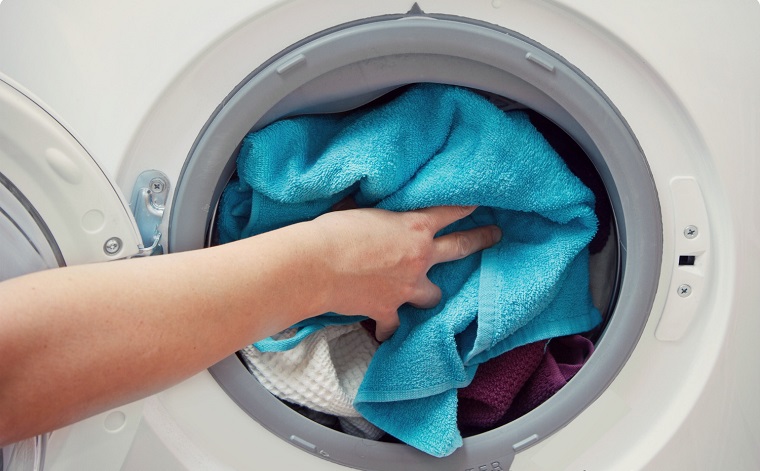
Please ensure that you do not wash an excessive amount of clothing or an insufficient amount.
Extend Clothes’ Lifespan with Specialized Detergent and Fabric Softener
It is a common misconception that laundry detergent designed for top-loading machines and handwashing can also be used for front-loading machines.
Excessive foaming can be a concern when using hand washing detergents with front-loading machines. If not properly addressed, it can lead to detrimental outcomes such as overflow and mold development within the washing drum, as well as potential damage to the motor responsible for rotation.
It is important to select specialized laundry detergents and fabric softeners specifically designed for front-loading machines in order to maintain the performance and longevity of your appliance.
It is important to follow the manufacturer’s instructions when purchasing and using laundry detergent. Using the appropriate amount of detergent will not only save you money, but also effectively clean your clothes and maintain the safe operation of your washing machine.
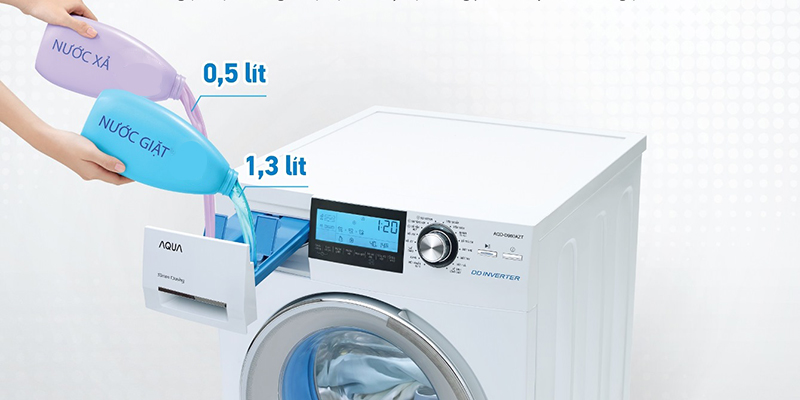
To ensure optimal and safe operation of your washing machine, it is recommended to use specialized laundry detergent and fabric softener. These products have been specifically designed to provide the best results without causing any damage to your machine or clothing. Using the right detergent and fabric softener will not only keep your washing machine in good condition, but also ensure that your clothes come out clean, fresh, and soft after every wash. Choose from a wide range of high-quality products available in the market to effortlessly maintain the cleanliness and longevity of your washing machine.
Choosing the Right Washing Mode for Your Clothing
In order to ensure efficient washing, it is essential to classify your laundry before placing it in the washing machine. We recommend separating light-colored and dark-colored clothes accordingly. Additionally, it is advisable to use a laundry bag for items made of thin fabrics or delicate materials, such as socks or stockings. By adhering to these guidelines, you can enhance the effectiveness and longevity of your garments during the washing process.
To ensure optimal care of your clothing items, it is recommended to select the appropriate washing mode based on the fabric material. Modern washing machines typically offer a range of washing modes, such as strong wash, normal wash, gentle wash, and shirt wash. By selecting the right washing mode, you can maintain the quality and longevity of your garments.
Furthermore, washing machines come equipped with intelligent washing modes specifically designed for various fabric materials and garment types, providing you with optimum control throughout the washing process.
For your favorite dresses, children’s clothes, or delicate fabrics prone to wrinkling, you can select the children’s clothes mode to maintain the clothes’ pristine condition.

:
Use Appropriate Water Temperature for Handwashing
Regular washing machines commonly utilize cold water for cleaning clothes.
Modern front-loading washing machines come with a range of temperature options, including 30 degrees Celsius, 40 degrees Celsius, and 60 degrees Celsius. These options are ideal for families with young children who use hot water to effectively clean clothes and eliminate bacteria.
Hot water is highly effective in removing stubborn stains. By using the hot wash function and the cleaning function of the drum, you can easily eliminate harmful bacteria, providing maximum protection for your family’s health.
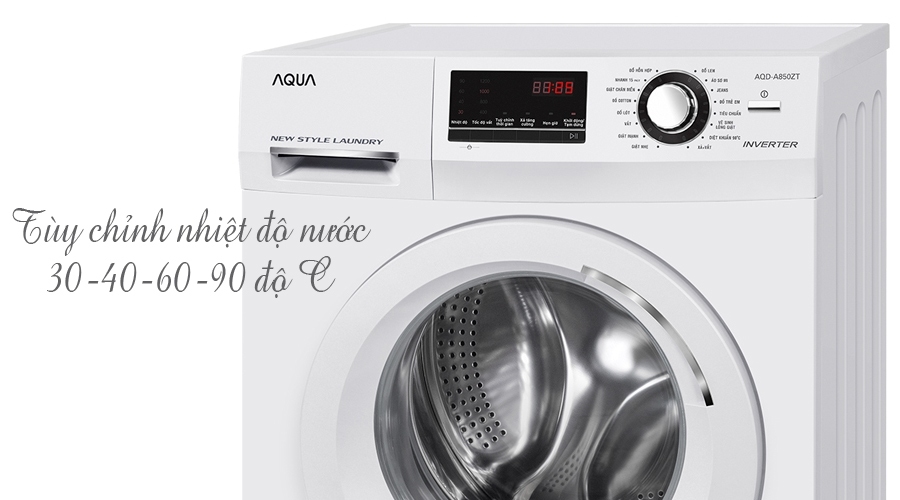
Choose the Appropriate Water Temperature
When it comes to water temperature, it is important to choose the right temperature for your needs. Whether you are taking a shower, washing your hands, or doing laundry, the water temperature can make a big difference. Here are some guidelines to help you choose the appropriate water temperature:
- For taking a shower, a temperature of around 100°F to 105°F is recommended. This temperature is warm enough to be comfortable, but not so hot that it will scald your skin.
- When washing your hands, a temperature of around 105°F to 110°F is ideal. This temperature will help to remove bacteria and germs effectively.
- For doing laundry, a temperature of 120°F to 130°F is usually sufficient. This temperature will help to remove stains and kill bacteria.
Remember, it is important to always test the water temperature before using it to avoid any discomfort or injury. Additionally, it is a good idea to keep your water heater set at a safe and energy-efficient temperature to save on energy costs.
Choosing the Right Spin Speed for Laundry Loads
Front-loading washing machines are typically engineered with a superior spin speed of up to 2000 RPM, effectively extracting excess moisture from clothes and leaving them nearly dry at the end of the washing cycle.
Please select the appropriate spin speed for various types of laundry. This will ensure optimal washing and faster drying during the spin cycle, resulting in properly cleaned and efficiently dried clothes.
To ensure optimal washing results and to protect your garments, it is recommended to adjust the spin speed based on the thickness and quantity of clothes being washed.
For optimal results, please follow the recommended spin speed settings:
- For thin clothes or dresses, it is recommended to select a spin speed between 1000-1400 RPM.
- For heavier fabrics such as blankets and jeans, a spin speed of 1500 RPM or higher is recommended.

Choose the right spin speed for your laundry load. For smaller loads, select a lower spin speed to prevent excessive wear and tear on your clothes. For larger loads, use a higher spin speed to ensure effective water extraction and shorter drying times. Remember to always refer to the manufacturer’s recommendations for your specific appliance.
Health Expert Advises Regular Washing Drum Cleaning
To increase the longevity of your washing machine, it is advisable to conduct regular inspections and cleaning. Utilize a soft cloth and a specifically formulated cleaning solution for washing machines to wipe down the machine on a weekly basis.
To maintain a clean and bacteria-free washing drum, it is recommended to clean it 2-3 times per month, depending on usage frequency. This regular maintenance will help ensure optimal functioning and hygiene.
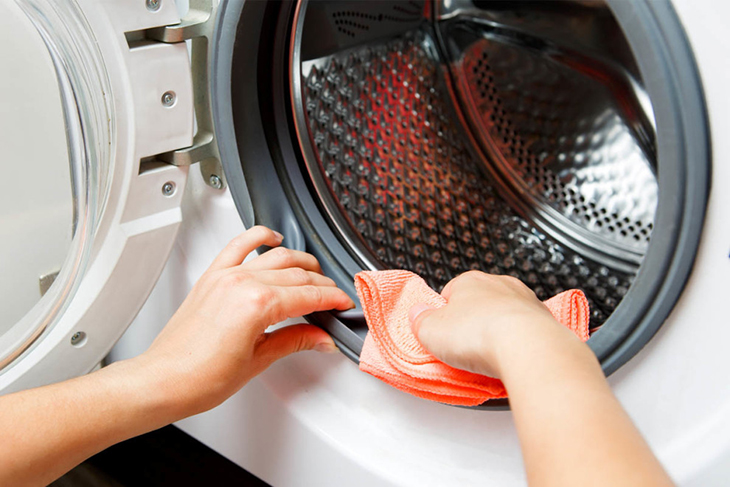
Regular Cleaning of Your Washing Drum
Keeping your washing drum clean is essential for maintaining the efficiency and lifespan of your washing machine. Here are some tips to help you clean your washing drum regularly:
- Empty the washing drum and remove any loose dirt or debris.
- Mix a solution of equal parts vinegar and water.
- Use a soft cloth or sponge soaked in the vinegar and water solution to wipe the inside of the drum.
- For tougher stains or odors, create a paste using baking soda and water and apply it to the stains.
- Let the paste sit for a few minutes, then scrub with a soft brush.
- Rinse the drum thoroughly with water.
- Leave the washing machine door open to allow the drum to air dry completely.
Following these steps regularly will help prevent odors and bacteria buildup, ensuring your clothes always come out fresh and clean.
How to Ensure Cleanliness of Detergent and Fabric Softener Compartments
Neglecting to inspect and clean the detergent and fabric softener compartments can lead to the accumulation of dirt and bacteria. Consequently, failing to address this issue may result in these harmful bacteria being transferred to your clothes, which can negatively impact your well-being.
Experts recommend cleaning the detergent compartments of your washing machine every 3-4 months to ensure optimal washing performance.
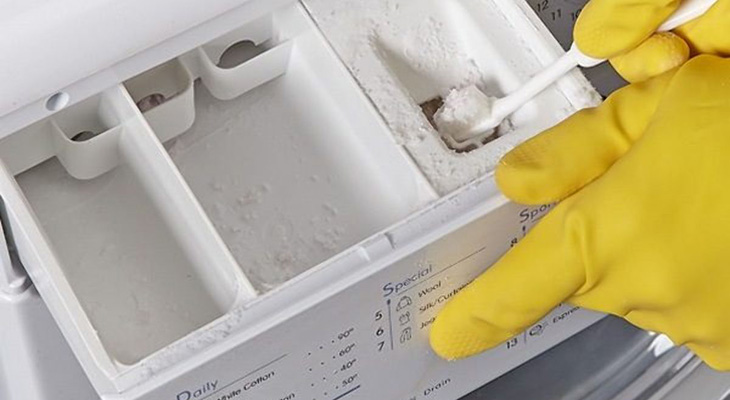
Please ensure that you regularly inspect and maintain the detergent and fabric softener compartments.
“Don’t Forget to Clean More than Just Your Dishwasher in the Kitchen”
Regular maintenance is crucial for optimal performance of your washing machine. Over time, dirt, sand, and other debris can build up in the inlet and outlet valves, leading to inaccurate water levels and increased energy consumption. To ensure efficient operation and avoid unnecessary expenses, it is recommended to clean these valves periodically.
It is important to regularly clean these areas in order to inhibit the growth of bacteria and mold. Any issues that may arise should be promptly addressed and resolved.
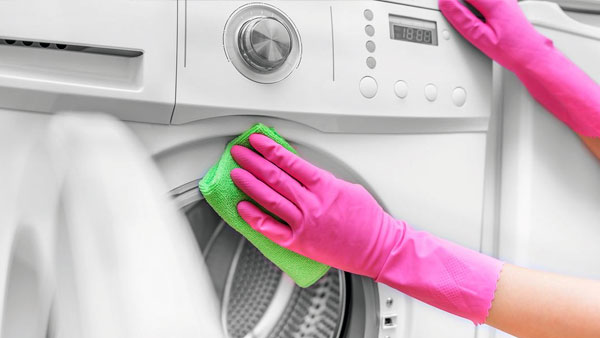
Clean regularly
Don’t just clean the main areas of your home, but also make sure to regularly clean other parts such as the garage, basement, and attic. These areas tend to accumulate dust and dirt over time, so it’s important to give them some attention as well.
How to Select the Right Spot for Your Washing Machine
When choosing a location for your washing machine, it is important to consider the size of the space. Avoid placing it in cramped areas that may make it inconvenient to operate, such as loading or unloading clothes. Similarly, avoid overly spacious areas that would waste usable space. Select a location that strikes a balance between accessibility and optimal use of your available space.
To ensure optimal functionality and safety, it is recommended to position the washing machine at a minimum distance of 5-10 cm from surrounding objects. The chosen location should have proper ventilation and a level surface to prevent any hazardous situations for the user. These measures not only enhance the longevity of the machine’s motor but also facilitate smooth operation.
Please ensure that the washing machine is not placed in a damp area and take care to prevent any water from coming into contact with the control panel. In the event that any water does spill, please promptly wipe it dry. Furthermore, it is important to level the machine in order to avoid any problems, such as water not properly flowing into the detergent compartment or excessive noise during the washing process.

Choosing the Right Location for Your Washing Machine
When it comes to selecting the ideal location for your washing machine, there are a few factors to consider. Here’s what you need to keep in mind:
- Accessibility: Ensure that the location is easily accessible for loading and unloading clothes. It should be convenient for you to reach without any obstacles.
- Water Supply: Make sure that the location is near a water supply line to connect the machine. This will help in the smooth functioning of the washing machine.
- Drainage: Check if the location has proper drainage for the wastewater. The machine should be able to discharge the water efficiently without any blockages.
- Ventilation: Choose a well-ventilated area for the washing machine. This will help prevent any mildew or mold growth and keep the laundry area fresh.
- Stability: Ensure that the location provides a stable platform for the washing machine. It should be leveled and sturdy to avoid any shaking or movement during operation.
- Noise: Consider the noise level of the washing machine and its impact on the surrounding area. If possible, select a location that is away from living or sleeping spaces to minimize disturbances.
By considering these factors, you can choose the perfect location for your washing machine that suits your needs and ensures efficient operation.
After reviewing the provided information, I trust that you now possess a comprehensive understanding of how to effectively utilize a front-loading washing machine, enabling you to make knowledgeable decisions when procuring one for your household!
Washing Machine: Identifying the Source of the Problem and Resolving It’>Troubleshooting a Malfunctioning Washing Machine: Identifying the Source of the Problem and Resolving It
How to Tell When Your Washing Machine Needs Cleaning and Maintenance
Do you find that your clothes are not coming out as clean as they once did? If so, it’s possible that your washing machine is in need of cleaning and maintenance. Read on to learn about the signs that indicate that your washing machine needs attention.





























 Maintenance
Maintenance







